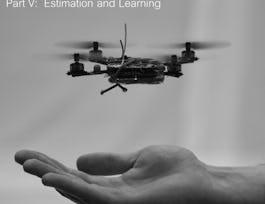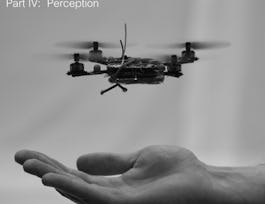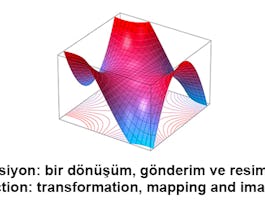How can robots use their motors and sensors to move around in an unstructured environment? You will understand how to design robot bodies and behaviors that recruit limbs and more general appendages to apply physical forces that confer reliable mobility in a complex and dynamic world. We develop an approach to composing simple dynamical abstractions that partially automate the generation of complicated sensorimotor programs. Specific topics that will be covered include: mobility in animals and robots, kinematics and dynamics of legged machines, and design of dynamical behavior via energy landscapes.


Robotics: Mobility
This course is part of Robotics Specialization
Taught in English
Some content may not be translated

Instructor: Daniel E. Koditschek
28,803 already enrolled
Included with 
Course
(595 reviews)
75%
Skills you'll gain
Details to know

Add to your LinkedIn profile
28 quizzes
Course
(595 reviews)
75%
See how employees at top companies are mastering in-demand skills

Build your subject-matter expertise
- Learn new concepts from industry experts
- Gain a foundational understanding of a subject or tool
- Develop job-relevant skills with hands-on projects
- Earn a shareable career certificate


Earn a career certificate
Add this credential to your LinkedIn profile, resume, or CV
Share it on social media and in your performance review

There are 4 modules in this course
We start with a general consideration of animals, the exemplar of mobility in nature. This leads us to adopt the stance of bioinspiration rather than biomimicry, i.e., extracting principles rather than appearances and applying them systematically to our machines. A little more thinking about typical animal mobility leads us to focus on appendages – limbs and tails – as sources of motion. The second portion of the week offers a bit of background on the physical and mathematical foundations of limbed robotic mobility. We start with a linear spring-mass-damper system and consider the second order ordinary differential equation that describes it as a first order dynamical system. We then treat the simple pendulum – the simplest revolute kinematic limb – in the same manner just to give a taste for the nature of nonlinear dynamics that inevitably arise in robotics. We’ll finish with a treatment of stability and energy basins. Link to bibliography: https://www.coursera.org/learn/robotics-mobility/resources/pqYOc
What's included
8 videos3 readings5 quizzes
We’ll start with behavioral components that take the form of what we call “templates:” very simple mechanisms whose motions are fundamental to the more complex limbed strategies employed by animal and robot locomotors. We’ll focus on the “compass gait” (the motion of a two spoked rimless wheel) and the spring loaded inverted pendulum – the abbreviated versions of legged walkers and legged runners, respectively.We’ll then shift over to look at the physical components of mobility. We’ll start with the notion of physical scaling laws and then review useful materials properties and their associated figures of merit. We’ll end with a brief but crucial look at the science and technology of actuators – the all important sources of the driving forces and torques in our robots. Link to bibliography: https://www.coursera.org/learn/robotics-mobility/resources/pqYOc
What's included
8 videos7 quizzes
Now we’ll put physical links and joints together and consider the geometry and the physics required to understand their coordinated motion. We’ll learn about the geometry of degrees of freedom. We’ll then go back to Newton and learn a compact way to write down the physical dynamics that describes the positions, velocities and accelerations of those degrees of freedom when forced by our actuators.Of course there are many different ways to put limbs and bodies together: again, the animals can teach us a lot as we consider the best morphology for our limbed robots. Sprawled posture runners like cockroaches have six legs which typically move in a stereotyped pattern which we will consider as a model for a hexapedal machine. Nature’s quadrupeds have their own varied gait patterns which we will match up to various four-legged robot designs as well. Finally, we’ll consider bipedal machines, and we’ll take the opportunity to distinguish human-like robot bipeds that are almost foredoomed to be slow quasi-static machines from a number of less animal-like bipedal robots whose embrace of bioinspired principles allows them to be fast runners and jumpers. Link to bibliography: https://www.coursera.org/learn/robotics-mobility/resources/pqYOc
What's included
6 videos6 quizzes
We now introduce the concept of dynamical composition, reviewing two types: a composition in time that we term “sequential”; and composition in space that we call “parallel.” We’ll put a bit more focus into that last concept, parallel composition and review what has been done historically, and what can be guaranteed mathematically when the simple templates of week 2 are tasked to worked together “in parallel” on variously more complicated morphologies. The final section of this week’s lesson brings you to the horizons of research into legged mobility. We give examples of how the same composition can be anchored in different bodies, and, conversely, how the same body can be made to run using different compositions. We will conclude with a quick look at the ragged edge of what is known about transitional behaviors such as leaping. Link to bibliography: https://www.coursera.org/learn/robotics-mobility/resources/pqYOc
What's included
10 videos10 quizzes
Instructor

Offered by
Recommended if you're interested in Mechanical Engineering

University of Pennsylvania

University of Pennsylvania

Coursera Project Network
Why people choose Coursera for their career




Learner reviews
Showing 3 of 595
595 reviews
- 5 stars
41.87%
- 4 stars
25.12%
- 3 stars
16.91%
- 2 stars
8.54%
- 1 star
7.53%

Open new doors with Coursera Plus
Unlimited access to 7,000+ world-class courses, hands-on projects, and job-ready certificate programs - all included in your subscription
Advance your career with an online degree
Earn a degree from world-class universities - 100% online
Join over 3,400 global companies that choose Coursera for Business
Upskill your employees to excel in the digital economy
Frequently asked questions
Access to lectures and assignments depends on your type of enrollment. If you take a course in audit mode, you will be able to see most course materials for free. To access graded assignments and to earn a Certificate, you will need to purchase the Certificate experience, during or after your audit. If you don't see the audit option:
The course may not offer an audit option. You can try a Free Trial instead, or apply for Financial Aid.
The course may offer 'Full Course, No Certificate' instead. This option lets you see all course materials, submit required assessments, and get a final grade. This also means that you will not be able to purchase a Certificate experience.
When you enroll in the course, you get access to all of the courses in the Specialization, and you earn a certificate when you complete the work. Your electronic Certificate will be added to your Accomplishments page - from there, you can print your Certificate or add it to your LinkedIn profile. If you only want to read and view the course content, you can audit the course for free.
If you subscribed, you get a 7-day free trial during which you can cancel at no penalty. After that, we don’t give refunds, but you can cancel your subscription at any time. See our full refund policy.


